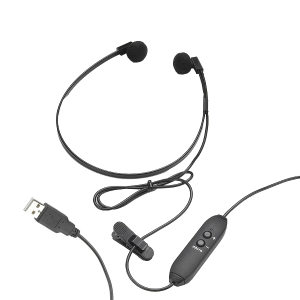

- #EXPRESS SCRIBE INFINITY FOOT PEDAL INSTALL#
- #EXPRESS SCRIBE INFINITY FOOT PEDAL DRIVERS#
- #EXPRESS SCRIBE INFINITY FOOT PEDAL DRIVER#
- #EXPRESS SCRIBE INFINITY FOOT PEDAL SOFTWARE#
#EXPRESS SCRIBE INFINITY FOOT PEDAL INSTALL#
In the scenario you are referring to you would configure Express Scribe on the remote machine to use HotKeys, you would then install Pedalware ( ), a free Windows only foot pedal utility made by NCH Software, you then use the Pedalware utility to assign the buttons of the pedal a HotKey that coincides with those set in the remote program.Transcription equipment has typically been designed for PCs using the Windows Operating System, and not so much for Apple Macintosh computers.
#EXPRESS SCRIBE INFINITY FOOT PEDAL SOFTWARE#
This software can use either a foot pedal, or you can assign the playback functions to hotkeys. For instance, these pedals are commonly used with NCH Software's Express Scribe Professional software.

I do have a solution that will allow you to use the pedal as intended if the remote program needing to use it supports the use of hotkeys. Lesser build quality than the Infinity (in my opinion) but it works perfectly. I did not try this solution, but purchased a different foot pedal that does work with VMs out of the box: a vPedal vP-1. They recommended using a hotkey program to work around the problem.
#EXPRESS SCRIBE INFINITY FOOT PEDAL DRIVERS#
Because they are installed by Windows base drivers as generic USB devices, they cannot be seen my remote computers via USB sharing etc. These pedals are all just universal USB controllers that require programs or apps to be able to see and recognize them for use.

Thank you for any insights on fixing this problem.Īnswering my own question: I spoke with a vendor who said this pedal won't work on virtual machines for the following reason: Kernel: usb 2-1.7: USB disconnect, device number 28 Kernel: usb 2-1.7: reset low-speed USB device number 28 using ehci-pci

Mtp-probe: bus: 2, device: 28 was not an MTP deviceĪnd when I click "OK" to the dialog, it says: Kernel: usb 2-1.7: Product: VEC USB Footpedal Kernel: usb 2-1.7: New USB device strings: Mfr=1, Product=2, SerialNumber=0 Kernel: usb 2-1.7: New USB device found, idVendor=05f3, idProduct=00ff Kernel: usb 2-1.7: new low-speed USB device number 28 using ehci-pci Here is what /var/log/syslog says when I connect the pedal with the Windows guest in the foreground: (Clicking cancel keeps the device disconnected from the guest.) I don't know if the dialog is meaningful or a red herring. My other USB devices do not pop up that dialog. When I click "OK", we get to the state above: Windows recognizes that the device is connected, but foot-presses are not detected. To continue, the device will first be disconnected from its current driver.
#EXPRESS SCRIBE INFINITY FOOT PEDAL DRIVER#
The specified device is claimed by another driver (usbhid) on the host operating system. When I connect the pedal, even with the guest in the foreground, VMware Workstation pops up a dialog: I tried the pedal on a real Windows computer and it worked fine. I downloaded a USB foot pedal tester ( ) on the guest and it recognized that the device was connected, but when I pressed any of the three pedals, the tester did not detect the presses. When I connect an Infinity IN-USB-2 footpedal to my Windows 7 Professional guest (on Ubuntu 14.04 and VMware Workstation 10.0.2), the pedal gets recognized by Windows and various applications, but pressing the pedal itself has no effect.


 0 kommentar(er)
0 kommentar(er)
